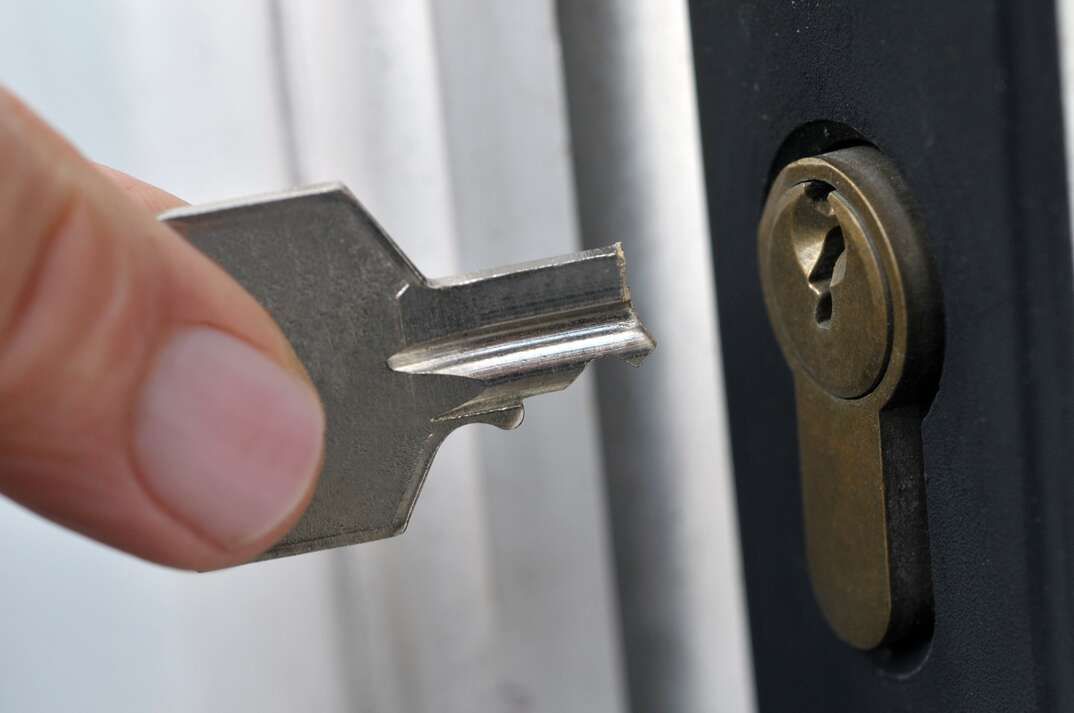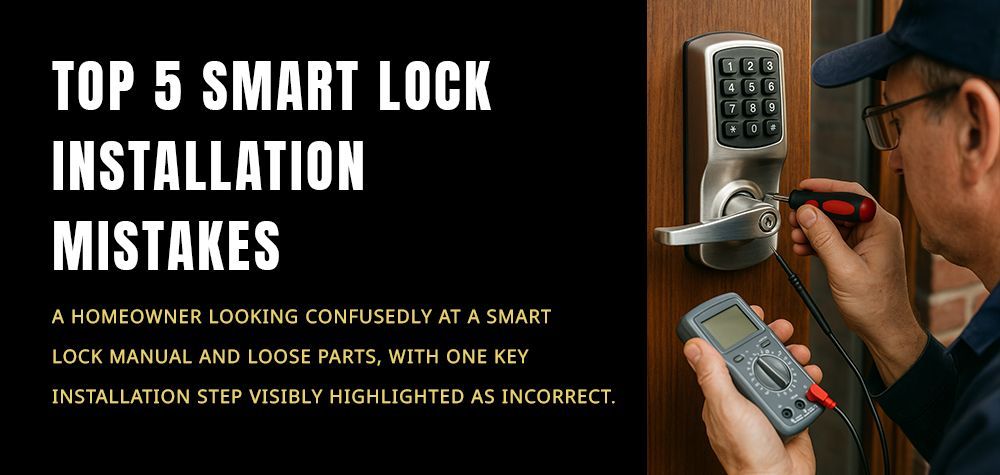Door Lock and Latch Issues
Door locks and latches play a crucial role in securing our homes and ensuring our safety and privacy. However, like any mechanical component, they can encounter various issues over time, leading to inconvenience and potential security risks. Understanding common door lock and latch issues and knowing how to address them can help homeowners maintain the security and functionality of their doors. In this guide, we will explore the types of door locks and latches, common problems associated with them, troubleshooting methods, the importance of seeking professional assistance when needed, and preventive maintenance tips to avoid future issues. Let's delve into the world of door lock and latch issues and learn how to keep our homes safe and secure.
Read more about Door knob won't turn in and how to fix it!
Types of Door Locks and Latches
A. Deadbolt Locks
- Description: Deadbolt locks are sturdy locks that provide additional security by extending a solid metal bolt into the door frame.
- Functionality: They are operated using a key from the outside and a thumb turn from the inside.
B. Knob Locks
- Description: Knob locks are the most common type of locks found in residential doors, featuring a knob on both sides of the door.
- Functionality: They can be locked and unlocked by turning the knob from the inside and using a key from the outside.
C. Lever Handle Locks
- Description: Lever handle locks have a lever instead of a knob, making them easier to operate, especially for individuals with disabilities.
- Functionality:They operate similarly to knob locks, with levers instead of knobs for locking and unlocking.
D. Mortise Locks
- Description: Mortise locks are installed within the door, offering a high level of security and durability.
- Functionality: They feature a key-operated cylinder on the outside and a lever or knob on the inside for locking and unlocking.
E. Padlocks
- Description: Padlocks are portable locks that can be attached to a door hasp or a chain to secure doors, gates, or storage units.
- Functionality: They are operated using a key or a combination dial to lock and unlock.
F. Cam Locks
- Description: Cam locks are often used in cabinets, drawers, and lockers, providing a simple and effective locking mechanism.
- Functionality: They are operated using a key or a tool to rotate a cam, securing the door or drawer in place.
Learn more about Dealing with a frozen door lock!

Common Issues with Door Locks and Latches
Jammed Locks:
Jammed locks are a common issue that can occur due to various reasons, such as dirt, debris, or foreign objects obstructing the locking mechanism. When a lock becomes jammed, attempting to force it open can worsen the problem and potentially damage the lock further. To address this issue, it's essential to first identify the cause of the jam. This may involve visually inspecting the lock and attempting to remove any visible obstructions using a lubricant or cleaning solution. In some cases, disassembling the lock may be necessary to access and remove the jammed debris safely. However, it's crucial to exercise caution and avoid excessive force to prevent causing additional damage to the lock.
Read here about Role of doors in home security!
Stiff or Hard-to-Turn Locks:
Stiff or hard-to-turn locks can be frustrating to deal with and may indicate underlying issues with the lock's internal components or external factors such as weather-related swelling of the door. When encountering a stiff lock, it's essential to first rule out any external factors by ensuring that the door is properly aligned and free from any obstructions. If the stiffness persists, it may be indicative of worn-out or corroded internal components within the lock mechanism. In such cases, applying a lubricant specifically designed for locks can help loosen the internal components and improve the lock's functionality. However, if the stiffness persists despite lubrication, it may be necessary to disassemble the lock and inspect the internal components for signs of damage or wear. Depending on the severity of the issue, repairing or replacing the affected components may be required to restore the lock's smooth operation.
Misaligned Latches:
Misaligned latches are another common issue that can affect the functionality of a door lock. A misaligned latch occurs when the strike plate, which receives the latch bolt when the door is closed, is not properly aligned with the latch. This misalignment can prevent the latch from engaging correctly, resulting in difficulty in locking or unlocking the door. To address this issue, it's essential to first identify the source of misalignment by visually inspecting the door and strike plate. Common causes of misaligned latches include loose screws, warped door frames, or improper installation of the strike plate. In some cases, simply tightening the screws on the strike plate or adjusting its position can resolve the misalignment issue. However, if the misalignment is due to a more significant structural problem, such as a warped door frame, more extensive repairs may be necessary to correct the issue.
Click here to read about Why Is My Push Button Door Lock Not Working?
Broken Key or Keyway:
A broken key or keyway can render a door lock unusable and present a significant inconvenience to homeowners. A broken key can occur due to various reasons, such as excessive force while turning the key or a weakened key that snaps off inside the lock. When faced with a broken key or keyway, it's crucial to refrain from attempting to force the broken key out of the lock, as this can cause further damage to the lock mechanism. Instead, it's advisable to use lubrication or graphite powder to lubricate the keyway and gently attempt to remove the broken key using needle-nose pliers or tweezers. If the broken key is lodged firmly within the lock and cannot be removed manually, seeking assistance from a professional locksmith is recommended. Locksmiths have the tools and expertise to safely extract broken keys from locks without causing damage to the lock mechanism, restoring functionality to the door lock promptly.
Loose or Worn-Out Lock Components:
Over time, door locks may experience wear and tear, leading to the loosening or deterioration of various lock components. Common components prone to becoming loose or worn-out include screws, springs, and internal mechanisms within the lock cylinder. Loose screws can cause instability in the lock assembly, resulting in difficulty in turning the key or properly engaging the latch. Similarly, worn-out internal components, such as springs or pins, can affect the smooth operation of the lock, leading to issues such as key sticking or lock jamming. To address this issue, it's essential to inspect the lock mechanism thoroughly and identify any loose or damaged components. Tightening loose screws using a screwdriver and replacing worn-out parts can help restore the functionality of the lock and prevent further deterioration.
Stiff or Hard-to-Turn Locks:
Stiff or hard-to-turn locks are a common issue encountered by homeowners, particularly in older or heavily used door locks. This problem typically occurs due to a buildup of dirt, dust, or debris within the lock mechanism, hindering the smooth operation of the lock cylinder. Additionally, exposure to moisture or humidity can cause internal components to corrode or rust, further exacerbating the stiffness of the lock. To address this issue, it's important to clean and lubricate the lock mechanism regularly to remove any accumulated debris and ensure smooth operation. Using a can of compressed air to blow out debris from the keyway and applying a lubricant, such as graphite powder or silicone-based lubricant, can help alleviate stiffness and improve the functionality of the lock. Additionally, inspecting the door and frame for any signs of misalignment that may contribute to the stiffness of the lock is recommended. If stiffness persists despite cleaning and lubrication efforts, consulting a professional locksmith may be necessary to assess and repair any underlying issues with the lock mechanism.
Read more about Top door lock brands!
Troubleshooting Door Lock and Latch Issues
When facing door lock and latch issues, troubleshooting can help identify the root cause and implement effective solutions. Here are some common troubleshooting steps:
- Inspect the Key: If the lock is not turning smoothly, check the key for signs of damage or bending. A worn-out or damaged key may not engage properly with the lock mechanism, leading to difficulty in turning the key. In such cases, using a spare key or having a locksmith create a new key can resolve the issue.
- Clean the Lock Mechanism: Dirt, dust, and debris can accumulate within the lock mechanism over time, causing stiffness or jamming. Use a can of compressed air to blow out any debris from the keyway and internal components of the lock. Follow up by spraying a lubricant, such as graphite powder or silicone-based lubricant, into the keyway to lubricate the moving parts and improve the lock's functionality.
- Check for Misalignment: Misaligned door frames or strike plates can prevent the latch from properly engaging with the strike plate, resulting in difficulty in closing or locking the door. Inspect the alignment of the door and frame to ensure they are properly aligned. Adjust the strike plate or door hinges as needed to improve alignment and allow the latch to operate smoothly.
- Tighten Loose Screws: Loose screws in the door lock assembly or strike plate can cause instability and affect the operation of the lock. Use a screwdriver to tighten any loose screws in the lock mechanism, strike plate, or door hinges. Ensure all components are securely fastened to the door and frame to prevent further issues.
- Replace Worn-Out Components: If the lock or latch mechanism is heavily worn or damaged, it may be necessary to replace certain components to restore functionality. Consider replacing worn-out springs, pins, or the entire lock mechanism if necessary. Consult a professional locksmith for assistance with identifying and replacing worn-out components.
Read here about Door lock problems you must address!
Preventive Maintenance Tips
Preventive maintenance plays a crucial role in ensuring the longevity and optimal performance of door locks and latches. Here are some preventive maintenance tips to keep your door hardware in top condition:
- Regular Cleaning: Clean the exterior and interior components of door locks and latches regularly to remove dirt, dust, and debris. Use a soft cloth dampened with mild soapy water to gently wipe down the surfaces. Avoid using abrasive cleaners or harsh chemicals that may damage the finish.
- Lubrication: Apply lubricant to the moving parts of door locks and latches to reduce friction and wear. Use a silicone-based lubricant or graphite powder to lubricate the keyway, latch mechanism, and other moving components. Avoid using oil-based lubricants, as they can attract dirt and debris.
- Inspect and Tighten Hardware: Periodically inspect the screws, bolts, and other hardware securing the door locks and latches to the door and frame. Tighten any loose screws or bolts using a screwdriver or wrench to prevent instability and ensure secure attachment.
- Test Operation: Regularly test the operation of door locks and latches to ensure they are functioning smoothly and effectively. Turn the key, operate the handle or knob, and check the latch mechanism to verify proper operation. Address any stiffness, sticking, or other issues promptly to prevent further damage.
- Adjust Alignment: Monitor the alignment of the door and frame to ensure proper engagement of the latch with the strike plate. If you notice any misalignment or difficulty in closing the door smoothly, adjust the strike plate or hinges as needed to improve alignment and prevent excessive strain on the lock mechanism.
- Protect from Extreme Conditions: Exposure to extreme weather conditions, such as rain, snow, and direct sunlight, can cause premature wear and corrosion of door hardware. Consider installing a protective cover or awning over exterior doors to shield them from the elements and prolong their lifespan.
- Update Security Features: Periodically review and update the security features of your door locks and latches to stay ahead of potential threats. Consider upgrading to high-security locks, smart locks, or additional security devices to enhance protection against unauthorized access.
Conclusion:
In conclusion, door locks and latches are essential components of any home or building, providing security, privacy, and peace of mind. However, they are susceptible to various issues that can compromise their functionality and effectiveness. By understanding the common issues associated with door locks and latches, troubleshooting problems promptly, and implementing preventive maintenance measures, you can ensure their smooth operation and longevity.
Regular cleaning, lubrication, hardware inspection, and alignment adjustment are essential aspects of preventive maintenance that help keep door locks and latches in optimal condition. Additionally, testing the operation of locks and updating security features as needed can enhance protection against unauthorized access and security threats.
By prioritizing preventive maintenance and promptly addressing any issues that arise, you can avoid costly repairs, security breaches, and inconvenience associated with malfunctioning door locks and latches. Investing time and effort in maintaining your door hardware pays off in the long run, ensuring the safety and security of your home or building for years to come.
Call Us Any Time!







